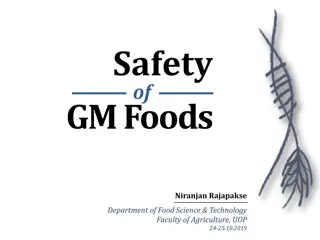Understanding Oxalates: Sources, Health Impacts, and Foods to Watch Out For
Oxalates are naturally occurring substances found in various foods and the human metabolism, with potential implications for kidney stone formation and calcium absorption. Foods high in oxalates include rhubarb, chocolate, berries, nuts, grains, and leafy greens like spinach. Managing oxalate intake is crucial for maintaining kidney health and overall well-being.
Download Presentation

Please find below an Image/Link to download the presentation.
The content on the website is provided AS IS for your information and personal use only. It may not be sold, licensed, or shared on other websites without obtaining consent from the author. Download presentation by click this link. If you encounter any issues during the download, it is possible that the publisher has removed the file from their server.
E N D
Presentation Transcript
Oxalates Student: Adis Lizalo Prof. Dr. Zeki ACAR
naturally-occurring substances found in a wide variety of foods many plants and animals and in our human metabolism strong acids constructed out of two carboxylic acids "oxalate" and "oxalic acid
overaccumulating inside our body kidneys urine with calcium oxalate salts 5-15% of all persons are estimated to develop some form of kidney stones
20-40% of the oxalates in our blood come from the foods we eat creating them from hydroxyproline in our liver taking vitamin C and transforming it into oxalate having our red blood cells synthesize oxalates from glyoxylate. amino acids like
plant and animal foods rhubarb / 450-650 milligrams chocolate / 250 milligrams berries, which typically contain between 10-50 mg (gooseberries can contain 60-90 mg) lemon (80-110 mg) nuts besides the high-oxalate nuts listed earlier (40-350 mg) legumes (10-75 mg): grain flours (40-250 mg)
Among fruits, vegetables and other food items the biggest oxalate sources are: blackberries blueberries raspberries strawberries grapes fig spinach cashews cocoa black and green tea
Two aspects of oxalates have been extensively studied from a health perspective: their relationship to kidney stone formation their relationship to calcium absorption and metabolism.
Table 1. Oxalate content in 100 grams of raw food items Raw food item Oxalate content (mg) Spinach 750 Beet 610 Parsley 100 Leek 89 Collard 74




















